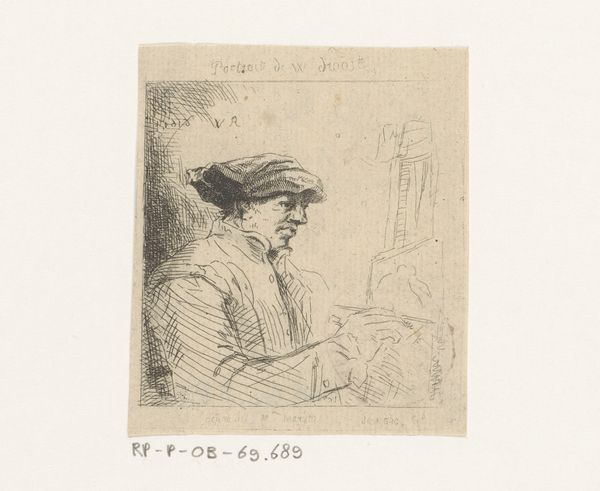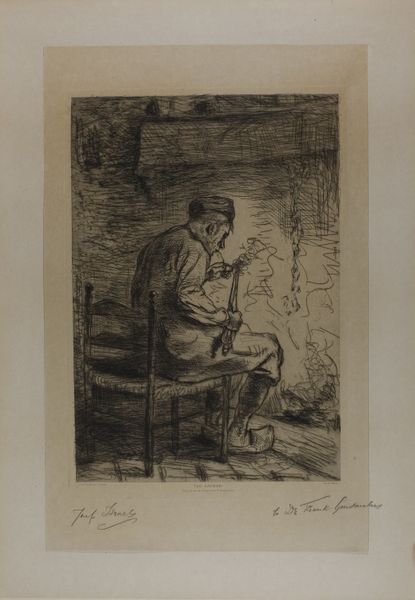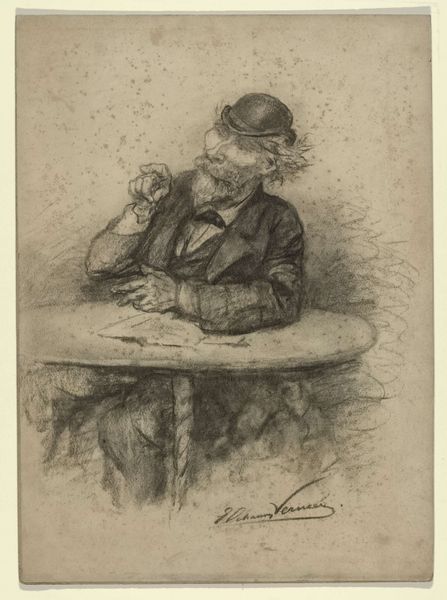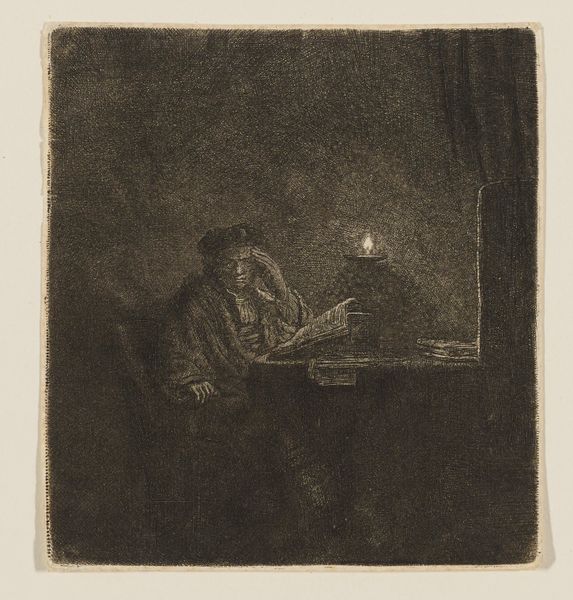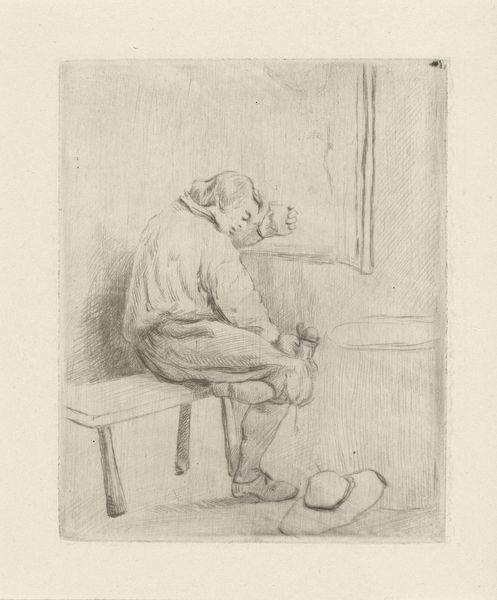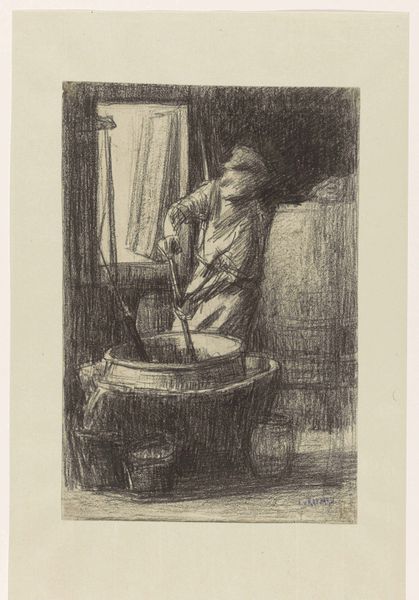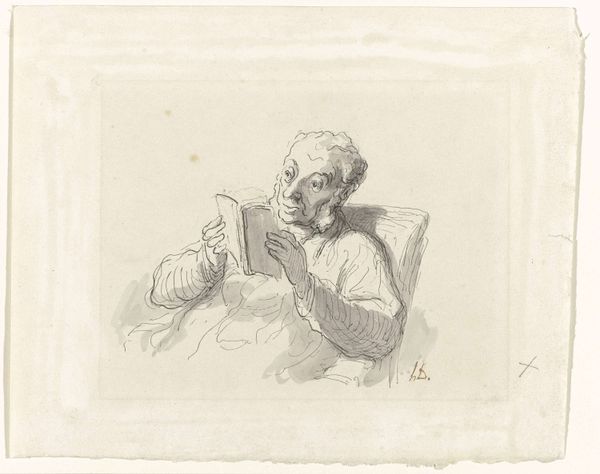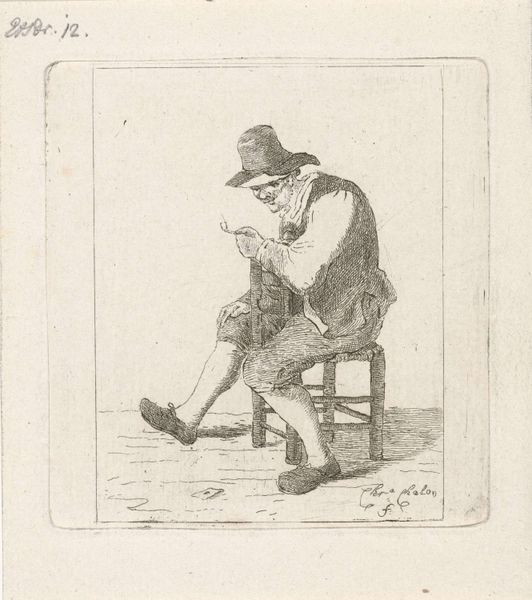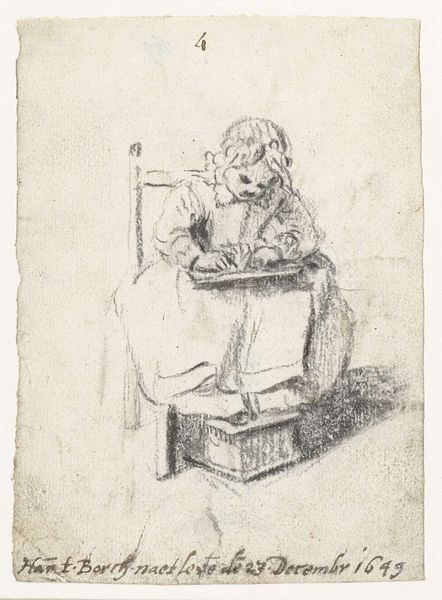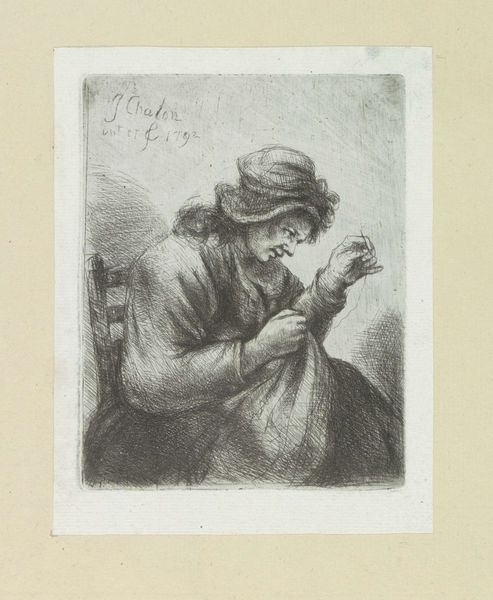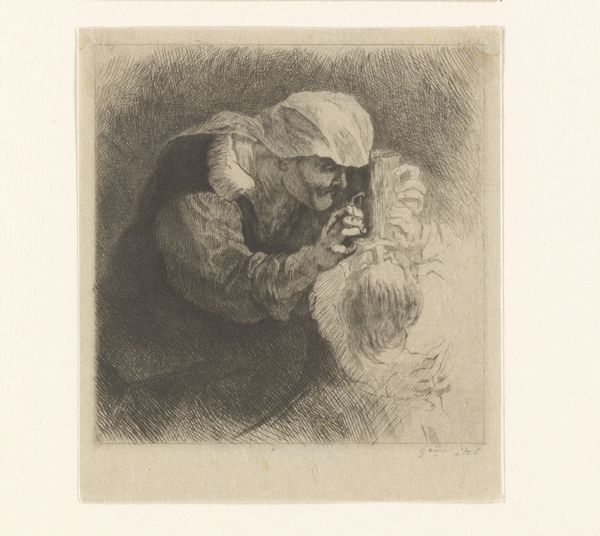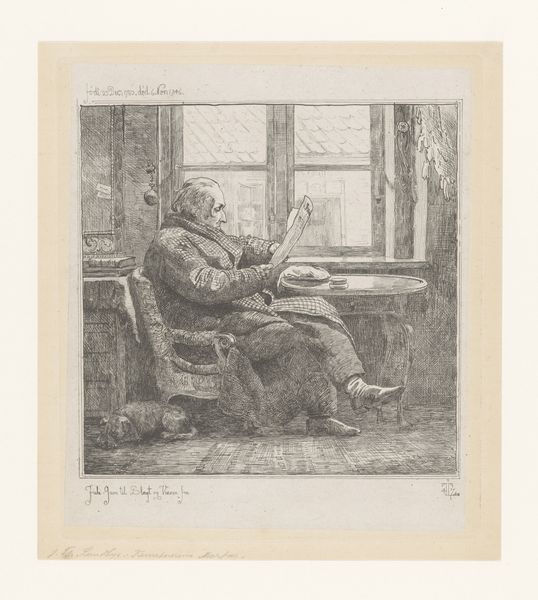
drawing, lithograph, print, etching
#
portrait
#
drawing
#
lithograph
# print
#
etching
#
figuration
#
genre-painting
Dimensions: height mm, width mm
Copyright: Rijks Museum: Open Domain
Simon Andreas Krausz created this etching of a smoking farmer sometime between the late 18th and early 19th century. Etching involves coating a metal plate with wax, drawing through the wax to expose the metal, and then immersing the plate in acid. The acid bites into the exposed lines, creating grooves that hold ink. This finely worked plate gives us a man exhaling smoke as he sits in contemplation. The figure is brought to life through a network of hatched lines. Consider the social context: Etching was a relatively democratic medium. It allowed for the reproduction of images, making art more accessible than unique paintings. In this image, Krausz represents the figure of a common man, and makes him available to the public. It also suggests that the artist saw worthiness and dignity in a figure from everyday life. The act of etching itself, with its reliance on skilled labor and reproducible forms, mirrors the changing landscape of work and social class during the late 1700s. So, next time you see an etching, remember that the image is not just about what it depicts, but also about the social implications of its making.
Comments
No comments
Be the first to comment and join the conversation on the ultimate creative platform.
